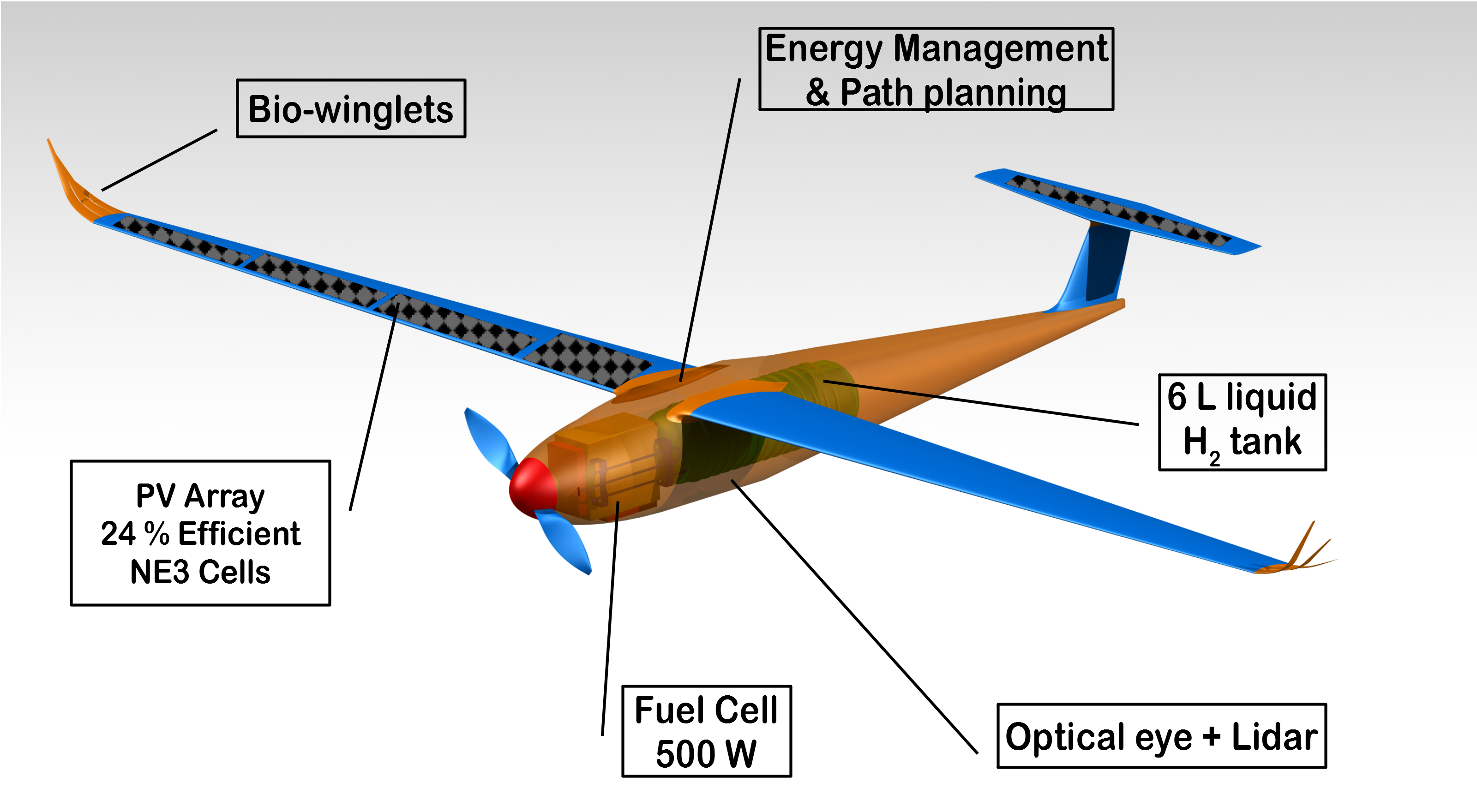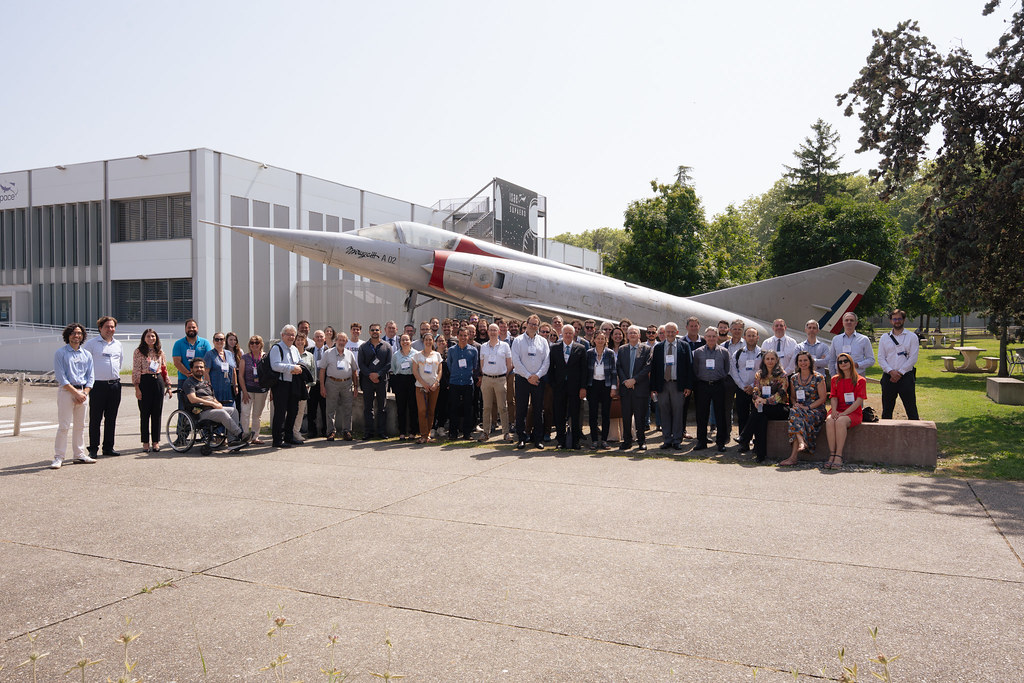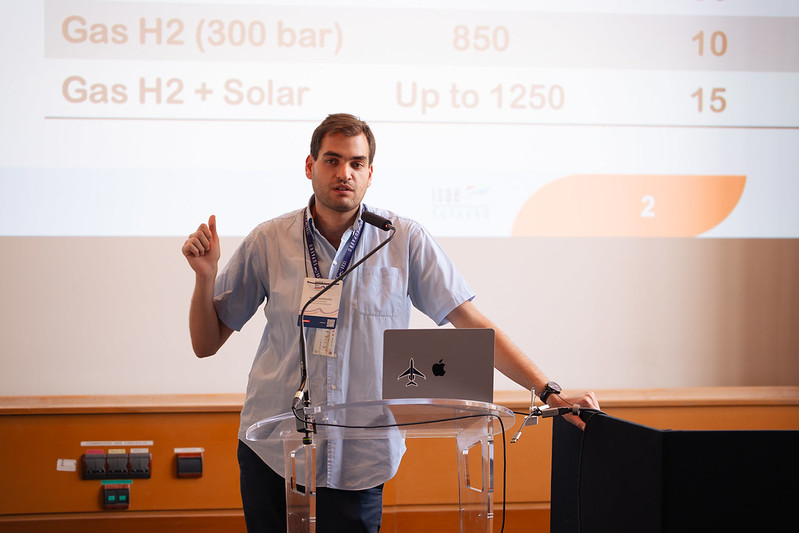

The project, entitled “Mermoz Drone,” was presented at the aeronautics session of FAPESP Week Toulouse(photo: ISAE-SUPAERO)
The aircraft’s design is inspired by albatrosses, which exploit atmospheric turbulence to fly for long periods with minimal effort and energy expenditure; the project, developed by French engineers, was presented during FAPESP Week France.
The aircraft’s design is inspired by albatrosses, which exploit atmospheric turbulence to fly for long periods with minimal effort and energy expenditure; the project, developed by French engineers, was presented during FAPESP Week France.

The project, entitled “Mermoz Drone,” was presented at the aeronautics session of FAPESP Week Toulouse(photo: ISAE-SUPAERO)
By Elton Alisson, from Toulouse | Agência FAPESP – In May 1930, Jean Mermoz (1901-1936), a pilot for the French company Aéropostale, completed the first nonstop commercial flight across the South Atlantic. He flew from Saint-Louis, Senegal, to Natal in the Brazilian state of Rio Grande do Norte.
Nearly a hundred years after this feat, a team of researchers and students from the Higher Institute of Aeronautics and Space (ISAE-SUPAERO) in Toulouse plans to recreate Mermoz’s nearly 3,200-kilometer journey. This time, however, they will use an unmanned aircraft: an electric-powered drone whose flight techniques are inspired by the albatross – a bird belonging to the order Procellariiformes and the family Diomedeidae.
The project, entitled “Mermoz Drone,” was presented at the aeronautics session of FAPESP Week Toulouse, which took place from June 10th to 12th in the capital of the Occitanie region in southern France.

The aeronautics session was held at the Higher Institute of Aeronautics and Space (ISAE-SUPAERO) in Toulouse (photo: Louis Derigon)
“There are a number of technological challenges that we’ll have to overcome to achieve this goal [of completing the world’s first all-electric aircraft crossing]. Some are being tackled separately and others together,” said Nikola Gavrilovic, a postdoctoral researcher at ISAE-SUPAERO and a participant in the project.
The researchers intend to develop a long-range, unmanned aircraft system powered by hydrogen fuel cells, capable of flying from Dakar, Senegal, to Natal. It would be light enough to fall into this certification category, allowing flights beyond the line of sight.
Electric unmanned aircraft systems are high in demand for military, civil, and commercial missions because they can fly for long periods without frequent landings and are quiet. However, Gavrilovic explained that the current generation has limitations in terms of range and endurance due to the low energy density of their lithium batteries.
“It isn’t possible to use current lithium batteries, which have low energy density for this purpose,” he said.
To overcome these limitations of lithium batteries, French engineers are using hydrogen fuel cells. These fuel cells are ideal for unmanned aircraft systems because they provide approximately five times more power per flight hour than lithium batteries do for the same weight. In addition, they offer greater reliability and lower maintenance requirements than small internal combustion engines.
“Fuel cell technology has been around since the 1960s and allows for a significant increase in energy storage density. Some of the problems with using it in aviation, however, is that, just as it produces a lot of electricity, it also generates a lot of heat. One of the challenges in this regard, in addition to energy storage, is evacuating the heat generated,” reflected Gavrilovic.

Nikola Gavrilovic, postdoctoral researcher at ISAE-SUPAERO (photo: Louis Derigon)
Hydrogen in aviation
In order to demonstrate the feasibility and reliability of the electric-powered drone, the researchers developed a prototype that generates energy from liquid hydrogen.
According to them, storing this fuel in liquid form, considered one of the most promising energy sources for decarbonizing aviation, allows the amount of hydrogen carried to be tripled for the same volume. This makes it possible to multiply the distance traveled by the drone.
“We’ve developed a reservoir for liquid hydrogen that keeps the fuel temperature below its boiling point of -253 °C. A system for using hydrogen in gaseous form is also being evaluated,” he said.
In November 2023, researchers conducted a test flight with the prototype to measure different aircraft parameters related to the propulsion system, including performance and energy consumption.
The drone prototype features a design inspired by albatrosses. These birds exploit atmospheric turbulence to fly for long periods of time with limited effort and energy expenditure. They can glide for thousands of kilometers without flapping their wings by quickly climbing against the wind and descending in its direction, gaining energy from the vertical wind gradient. This allows them to travel almost a thousand kilometers a day with minimal effort.
“We can replicate this strategy in the aircraft we’re developing,” said Gavrilovic.
The drone will be connected to a system that will enable satellite communication. “This makes it possible to load and update the route according to different weather conditions,” the researcher explained.
The goal is to make the final version of the aircraft weigh less than 25 kilograms.
For more information about FAPESP Week France, visit: fapesp.br/week/2025/france.
Republish
The Agency FAPESP licenses news via Creative Commons (CC-BY-NC-ND) so that they can be republished free of charge and in a simple way by other digital or printed vehicles. Agência FAPESP must be credited as the source of the content being republished and the name of the reporter (if any) must be attributed. Using the HMTL button below allows compliance with these rules, detailed in Digital Republishing Policy FAPESP.





